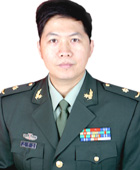肝功能较好(Child A和B级)和门静脉主干无癌栓而不能切除HCC病例,TACE是标准的姑息性治疗手段,可明显提高2年生存率( 20% ~63% ) ,其反应率平均达35% (16% ~61% ) [ 16 ] ,而TACE联合各种消融治疗的疗效优于单纯的TACE效果[ 17 ] 。三维调强放射治疗及质子束放射治疗等放疗新技术,可以直接杀灭肿瘤而正常组织损伤较轻,其肿瘤局部控制的有效率可达40% ~90% ,中位存活时间为10~25个月,门静脉癌栓病例放疗后中位存活时间为513~917个月,对于进展期肿瘤放疗附加TACE可能会取得更好的疗效[ 18 ] 。20世纪90年代以来,国外一些医学中心相继组建了由手术、放疗、影像、介入、化疗、营养、疼痛控制、麻醉、心理等相关专科构成的多专科联合诊疗团队。主要有两种形式: (1)“邦联式”模式。由专家组成的病例讨论会为中心,相关专业专家分别查看病人和相关临床资料,然后共同讨论制订出最佳治疗方案。( 2)“联邦式”模式。相关专业专家在一个临床中心,共同诊治患者。无论何种模式, 多专科联合诊疗团队这一新型专病医疗组织结构能为患者提供最佳的个体化治疗方案和高质量医疗服务,有力地推动了HCC临床治疗水平的进步。
综上所述,近年来HCC的治疗理念、策略、模式、技术乃至医疗组织结构都经历了重大演变。尽管多专科和多元化治疗模式已经显著改善了HCC的治疗效果,但HCC治疗仍然面临着严峻的挑战。当前,亟待综合评估分析业已积累的大量临床证据,重塑针对不同病理分期、生物学行为以及肝硬化程度的HCC病例的系统化治疗模式,从而为临床上制订合理的个体化治疗方案提供决策依据[ 19 ] 。
参 考 文 献
[ 1 ] Parkin DM. Global cancer statistics in the year 2000. Lancet Oncology, 2001, 2 (9) : 533 - 543.
[ 2 ] 张思维,李连弟,鲁凤珠,等. 中国1990~1992年原发性肝癌死亡调查分析. 中华肿瘤杂志, 1999, 21 (4) : 245 - 249.
[ 3 ] CanceWG, Stewart AK,Menck HR. The National CancerData Base Report on treatment patterns for hepatocellular carcinomas: imp roved survivalof surgically resected patients, 1985 - 1996. Cancer, 2000, 88 (4) : 912 - 920.
[ 4 ] Lau WY, Leung TW, Ho SK, et al. Adjuvant intra2arterial iodine21312labelled lip iodol for respectable hepatocellular carcinoma: a p rospectiverandomised trial. Lancet, 1999, 353 (155) : 797 - 801.
[ 5 ] 汤钊猷. 不能切除肝癌的缩小后切除. 实用肿瘤杂志, 1997, 12 (2) : 50 - 52.
[ 6 ] Abdalla EK, HicksME, Vauthey JN. Portal vein embolization: rationale, technique and future p rospects. Br J Surg, 2001, 88 (2) : 165 - 175.
[ 7 ] Hasegawa K, Kokudo N, Imamura H, et al. Prognostic impact of anatomic resection for hepatocellular carcinoma. Ann Surg, 2005, 242 (5) : 252 - 259.
[ 8 ] Liu CL, Fan ST, Cheung ST, et al. Anterior app roach versus conventional app roach right hepatic resection for large hepatocellular carcinoma: ap rospective randomized controlled study. Ann Surg, 2006, 244 (2) : 194 - 203.
[ 9 ] Mathurin P, Raynard B, Dharancy S, et al. Meta2analysis: evaluation of adjuvant therapy after curative liver resection for hepatocellularcarcinoma. Aliment Pharmacol Ther, 2003, 17 (10) : 1247 - 1261.
[ 10 ] Takayama T, Sekine T,MakuuchiM, et al. Adoptive immunotherapy to lower postsurgical recurrence rates of hepatocellular carcinoma: a randomisedtrial. Lancet, 2000, 356 (9232) : 802 - 807.
[ 11 ] Lopez PM,Villanueva A, Roayaie S, et al. Neoadjuvant therap ies for hepatocellular carcinoma before liver transp lantation: a critical app raisal. LiverTransp l, 2006, 12 (12) : 1747 - 1754.
[ 12 ] Lu DS, Yu NC, Raman SS, et al. Percutaneous radiofrequency ablation of hepatocellular carcinoma as a bridge to liver transp lantation.Hepatology, 2005, 41 (5) : 1130 - 1137.
[ 13 ] 刘允怡. 肝移植在肝癌治疗中的地位与评价. 中华肝胆外科杂志, 2003, 9 (5) : 265 - 267.
[ 14 ] ChenMS, Li JQ, Zheng Y, et al. A p rospective randomized trial comparing percutaneous local ablative therapy and partial hepatectomy for smallhepatocellular carcinoma. Ann Surg, 2006, 243 (3) : 321 - 328.
[ 15 ] Kudo M. Local ablation therapy for hepatocellular carcinoma: current status and future perspectives. J Gastroenterol, 2004, 39 (3) : 205 - 214.
[ 16 ] Llovet JM, Bruix J. Systematic review of randomized trials for unresectable hepatocellular carcinoma: Chemoembolization imp roves survival.Hepatology, 2003, 37 (2) : 429 - 442.
[ 17 ] Marelli L, Stigliano R, Triantos C, et al. Treatment outcomes for hepatocellular carcinoma using chemoembolization in combination with othertherap ies. Cancer Treat Rev, 2006, 32 (8) : 594 - 596.
[ 18 ] Hawkins MA, Dawson LA. Radiation therapy for hepatocellular carcinoma: from palliation to cure. Cancer, 2006, 106 (8) : 1653 - 1663.
[ 19 ] 董家鸿. 重塑肝细胞癌的系统化治疗模式. 中华消化外科杂志, 2007, 6 (11) : 3 - 4.
(收稿日期: 2007212203)
(本文编辑: 周 蕾)
本文文献标引格式:董家鸿,吕文平. 肝细胞癌治疗的理念与技术进展[ J /CD ]. 中华临床医师杂志(电子
版) , 2008, 2 (2) : 123 - 126.


























